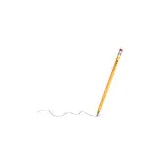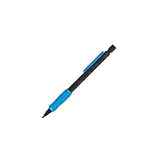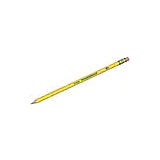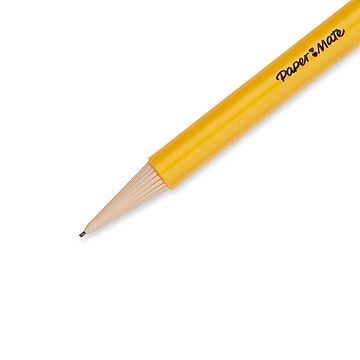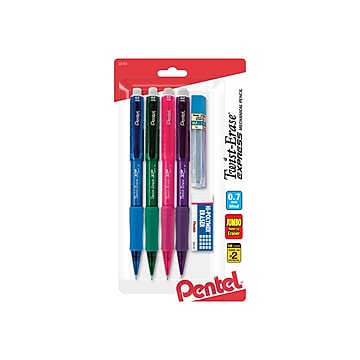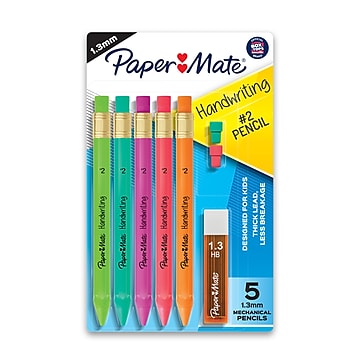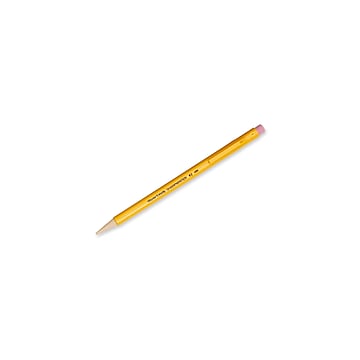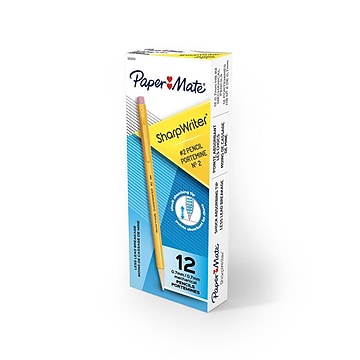Mechanical Pencils
Trending now


Mechanical pencils are incredibly convenient writing instruments and can be a great choice for school, work, or around the house. Keep reading to learn more about the features and benefits of mechanical lead pencils.
What is a Mechanical Pencil?
Unlike traditional wooden pencils, mechanical pencils have replaceable lead core that can be mechanically pushed out when you’re ready to write. This means that the lead never needs to be sharpened, but rather replaced once the lead is used. Mechanical lead pencils use standard #2 lead, which is made from graphite, so it’s able to be used for standardized tests and other uses that require this type of lead. Popular brands include BIC mechanical pencils and Pentel mechanical pencils.
How Do Mechanical Pencils Work?
Mechanical pencils work by pushing the lead out of the main holding chamber as a result of an advance mechanism, for example clicking the top of the pencil. This makes them one of the best lead-based writing utensils to transport because you don’t have to worry about the lead breaking as you’re traveling. You only need to retract the lead back into the main holding chamber and you won’t have to worry about wasting any product.
What Are the Benefits of Writing With a Mechanical Lead Pencil?
Mechanical pencils offer consistency and balance that other pencils can lack. Because the lead isn’t bonded to the interior of the pencil, it stays sharp, making writing and drawing on paper easier. Additionally, this feature allows you to have a more consistent grip because you won’t have to worry about adjusting your pencil based on the sharpness of your lead.
What Are Mechanical Pencils Used For?
These writing utensils are perfect for writing and drawing, and many artists, engineers, designers, teachers, and students alike use them on a daily basis. They are great for creating fine lines and precise markings, so if you need to create a detailed drawing or take notes quickly, a mechanical pencil may be perfect for you.
Additional Mechanical Pencil Features
Ways to Release Lead
Mechanical pencils release their lead in a variety of ways, including:
- Push button - A clicker at the top of the pencil pushes the lead forward.
- Twist - A knob at the top of the pencil twists to push out the lead. This design requires pencils with 0.7 mm leads or wider.
- Shaker - Built-in sliding weight releases lead when the pencil is shaken.
- Bend - The user squeezes the writing tool in the middle to release more lead.
- Automatic - The pencil automatically pushes out more lead whenever the tip gets down to the edge of the lead sleeve.
Lead Width Sizes
Mechanical lead pencils aren’t a one-size-fits-all writing utensil. Different mechanical pencils can accommodate different widths of lead.
- 0.2 mm or 0.3 mm create sharp, fine lines
- 0.5 mm or 0.7 mm both of which are ideal for everyday writing and drawing tasks
- 0.9 mm and above are best for sketching and writing bold lines
Grips
Some mechanical pencils are outfitted with pencil grips that help you maintain a comfortable writing position. Grips come in a variety of shapes, sizes, and materials, so you’ll need to test a few before finding the right one for your specific hand posture. Grips can be metal, plastic, rubber, or silicon, with the first two being firm and latter two being more flexible and squishy.








